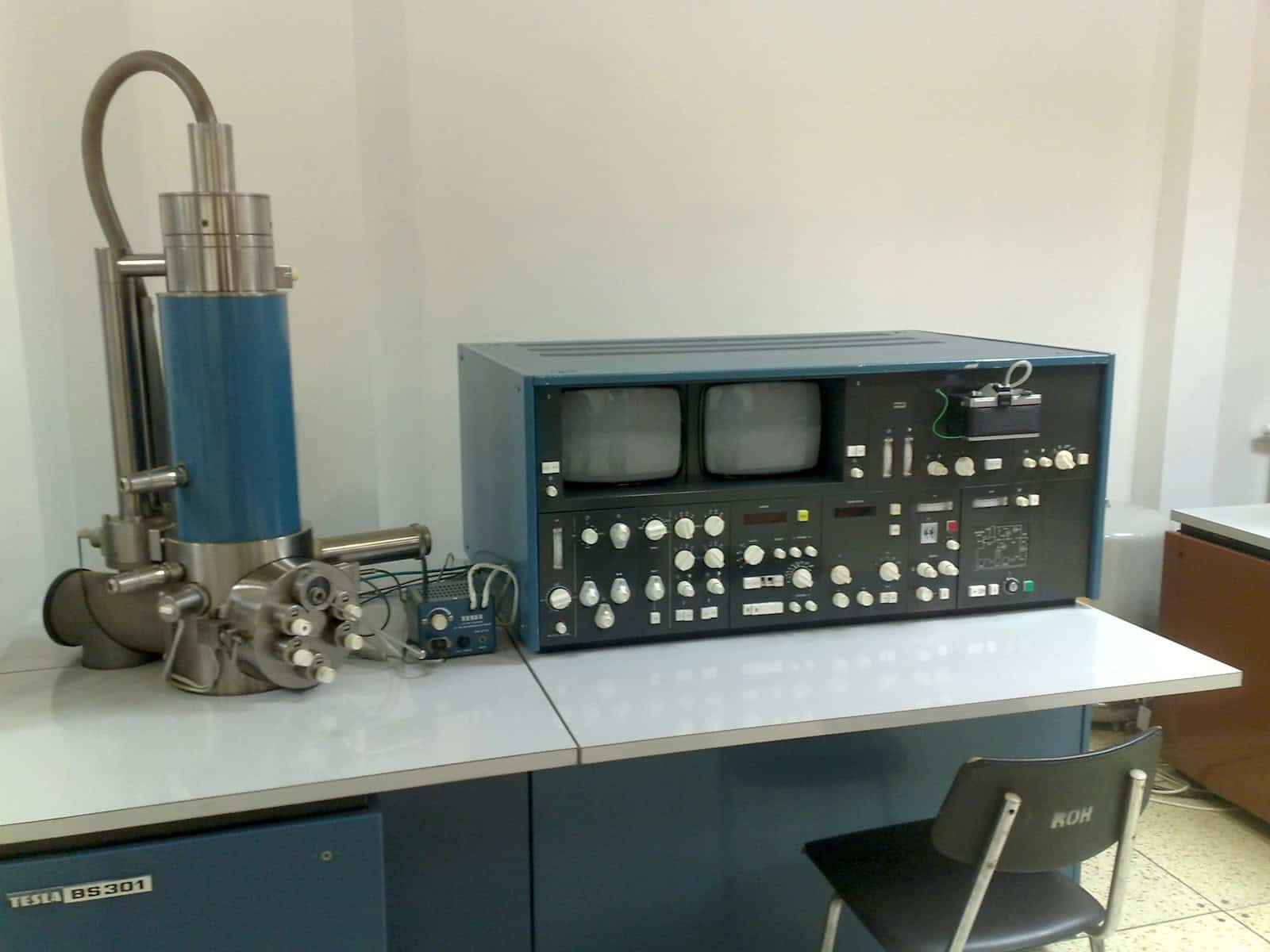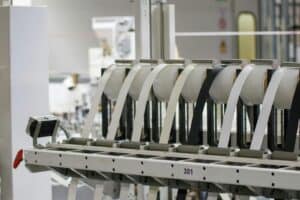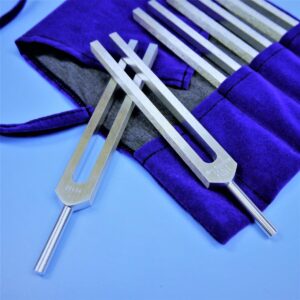原材料試験完全ガイド:主な方法を理解する
原材料の試験が重要な理由
原材料は、製品の品質、安全性、機能性を構成する基本的な部品です。これらの出発原料に問題がある場合(品質の違い、不要物質、規格に合わない材料など)、これらの問題は製造工程全体に広がります。その結果、最終製品の品質が低下し、規制上の問題が発生し、大きな経済的損失が生じることになる。 原材料 試験とは、これらの材料の同一性、純度、構成、および重要な特性を、決められた要求リストに照らしてチェックするための科学的研究である。これは単なる合格・不合格のチェックではなく、詳細な科学的プロセスであり、近代的な試験の基礎を形成している。 品質管理.
これは ガイドでは、完全なテクニカル 効果的な原材料試験プログラムを支える主な原理と方法の分析。私たちの目標は、基本的な試験のリストにとどまらず、なぜ、そしてどのようにこれらの方法が機能するのか、その科学を探求することです。この詳細な考察では、以下を取り上げます:

分析の基本原則
具体的な器具やテクニックを見る前に、まず私たちは次のことを理解しなければならない。 基本原則 すべての材料分析を管理するものである。これらの概念は、正しい試験を選択し、適切な限界値を設定し、結果を正しく理解するための枠組みを提供します。すべての分析化学者と品質管理マネジャーは、問題を解決し、材料の完全性を確保するために、これらの第一原則をしっかりと理解していなければなりません。
定性的分析と定量的分析
その核心は、すべての分析テストが2つの基本的な質問のうちの1つに答えることである。定性分析は同一性に焦点を当て、"それは何ですか?"という質問に答えます。原材料試験における定性分析の主な目的は、受け取った原材料が、その原材料が主張する通りのものであることを確認することです。例えば、定性試験では、「アスコルビン酸」と表示されたドラム缶に確かにアスコルビン酸が含まれており、クエン酸のような視覚的に類似した別の化合物が含まれていないことを確認します。これは試験プロセスにおける最初の、そして最も重要な関門である。
一方、定量分析は量に焦点を当て、"どれだけの量が存在するか?"という質問に答えるものである。これは、物質の純度、有効成分の濃度、または特定の不純物のレベルを決定するために使用されます。例えば、定量試験では、医薬品有効成分(API)のバッチが99.8%純度であり、特定の関連物質が0.05%以上含まれていないと判定することができる。
スペックの概念
原料は単独で試験されるのではなく、規格書(スペック)に照らして判断される。仕様書とは、要求される試験、従うべき分析手順、原料が使用を承認されるために満たさなければならない受入基準を記載した決定的な技術文書である。この文書は、原料サプライヤーとユーザーとの間の契約の役割を果たす。規格は無作為のものではなく、原材料の使用目的、最終製品への影響、確立された業界標準に基づいて慎重に作成される。多くの場合、医薬用材料については米国薬局方(USP)や欧州薬局方(EP)のような公的な薬局方、工業用化学品や材料についてはASTMインターナショナルや国際標準化機構(ISO)のような組織の規格に基づいています。
サンプリングとサンプルの準備
世界で最も高度な分析機器も、分析したサンプルがバッチ全体を代表するものでなければ、意味のない結果を出すことになる。適切なサンプリングは非常に重要であり、見落とされがちなステップである。サンプルは、何十本ものドラム缶や袋からなる原料のロット全体の潜在的なばらつきを正確に反映するように、検証された手順で採取されなければならない。不適切なサンプリング技術は、最も精密な分析試験を完全に無効にしてしまう可能性がある。サンプリングの後、最終測定が正確で再現可能であることを確実にするために、試料を溶解、抽出、希釈するなどの試料調製を正確に行わなければならない。
テクニックの比較概要
分析化学の分野では、原材料試験のための膨大な技術が提供されています。このような状況を効果的にナビゲートするために、私たちはこれらの手法を、その根底にある科学的原理に基づいて3つの主要なカテゴリーに分類することができます。これらの分類を理解することで、異なる技法が補完的な情報を提供するために使用される、論理的な試験戦略を立てることができます。ここでは、分光法、クロマトグラフィ法、物理的/機械的方法を主な分類とします。それぞれ、材料の特性を知るためのユニークな窓を提供します。
| カテゴリー | コア・プリンシプル | 主な使用例 | 例 | 主な利点 |
| 分光法 | 電磁波と物質との相互作用。 | 同一性の確認、官能基分析、元素濃度。 | FTIR、UV-Vis、AAS、NMR | スピード、非破壊性(多くの場合)、構造に対する高い特異性。 |
| クロマトグラフィー法 | 混合物中の成分を物理的に分離すること。 | 不純物や有効成分の純度評価、分離、定量。 | HPLC、GC、TLC | 高い分離力、複雑な混合物への優れた対応、高い定量性。 |
| フィジカル&メカニカル | バルクの物理的または機械的特性の測定。 | 物理的形状、応力下での性能、加工特性を検証する。 | 粒子径、融点、引張強さ | マテリアルハンドリング、性能、最終用途に直接関係する。 |
分光分析ディープダイブ
分光法は、電磁放射線と物質との相互作用を調べる技術の一種である。試料にエネルギーが加えられると、その原子や分子は特定の個別の波長でそのエネルギーを吸収したり放出したりする。この吸収または放出のパターンは、物質の化学構造に固有であり、同定や定量に使用できる「指紋」を作成する。分光法は、そのスピード、特異性、そして多くの場合、非破壊的な性質から、しばしば好まれ、迅速な原料確認のための強力なツールとなっている。

フーリエ変換赤外分光 (FTIR)
FTIR分光法の原理は、試料に赤外線を照射することである。分子は静止しているわけではなく、化学結合は常に振動し、伸び、曲がっている。これらの振動は、赤外線のエネルギーに対応する特定の周波数で起こります。赤外放射線の周波数が特定の結合の振動数(例えば、C=Oカルボニル伸縮やO-Hヒドロキシル伸縮)と一致すると、分子は放射線を吸収する。FTIRスペクトロメーターは、波長範囲にわたってこの吸収を測定し、分子のユニークな化学指紋として機能するスペクトルを生成する。原材料試験におけるFTIRの最も一般的な用途は、迅速な同一性の確認です。受入材料のFTIRスペクトルを既知の標準物質のスペクトルと比較することにより、数分でその同一性を確認することができます。
紫外可視 (UV-Vis)
紫外-可視分光法も同様の原理で作動するが、電磁スペクトルのうち、よりエネルギーの高い部分、すなわち紫外光と可視光を使用する。このエネルギーは、分子内の電子を励起し、低エネルギーの基底状態から高エネルギーの軌道に移動させるのに十分である。このプロセスは、芳香環や二重結合など、π結合や非結合電子を持つ構造的特徴である発色団を含む分子に最も効果的である。特定の波長で吸収される光の量は、溶液中の分析対象物の濃度に正比例し、この関係はBeer-Lambertの法則で記述される。このため、UV-Visは優れた定量ツールとなる。主な用途はアッセイで、有効成分や既知のUV吸収不純物の濃度を正確に測定するために使用される。
Atomic Absorption (AAS)
While FTIR and UV-Vis provide information about molecular structure, Atomic Absorption Spectroscopy is designed to measure the concentration of individual elements, specifically metals. In AAS, a liquid sample is atomized—converted into a cloud of free, ground-state atoms—typically using a flame or a graphite furnace. A lamp containing the element of interest emits light at a wavelength specific to that element. This light is passed through the atomized sample. The free atoms in the sample absorb the light, and the amount of absorption is directly proportional to the element’s concentration. This technique is exceptionally sensitive and specific. Its critical application in Raw Material Testing is for trace-level heavy metal analysis, ensuring materials comply with strict limits for toxic elements like lead (Pb), arsenic (As), cadmium (Cd), and mercury (Hg).
| テクニック | Underlying Principle | Information Obtained | Primary Application in Raw Material Testing |
| FTIR (Fourier-Transform Infrared) | Absorption of IR radiation causes molecular vibrations (stretching, bending) at characteristic frequencies. | Identifies functional groups (e.g., -OH, C=O). Creates a unique chemical “fingerprint.” | Identity Confirmation: Rapidly verifying if a material (e.g., a specific polymer or excipient) matches the reference standard. |
| UV-Vis (Ultraviolet-Visible) | Absorption of UV or visible light by electrons in molecules, promoting them to higher energy orbitals. | Concentration of an analyte in a solution (quantitative). Can also provide some structural information. | Assay/Purity: Quantifying the concentration of an active pharmaceutical ingredient (API) or a known impurity with a chromophore. |
| AAS (Atomic Absorption) | Gaseous atoms absorb light at specific wavelengths, corresponding to their electronic transitions. | Measures the concentration of specific metallic elements. | Heavy Metal Testing: Detecting and quantifying toxic metal impurities (e.g., Pb, As, Cd, Hg) in raw materials. |
Chromatographic Separation Deep Dive
Chromatography is not a measurement technique in itself but a powerful family of separation techniques. It is the cornerstone of purity analysis for complex mixtures. The core principle involves a “race” where the components of a mixture are separated based on their differential partitioning between a stationary phase (a solid or a liquid coated on a solid) and a mobile phase (a liquid or gas that flows through the system). Components that have a stronger affinity for the stationary phase move more slowly, while components with a stronger affinity for the mobile phase move more quickly. This difference in speed results in the separation of the mixture into its individual components, which are then detected and quantified as they exit the system.
High-Performance Liquid Chromatography (HPLC)
HPLC is arguably the most versatile and widely used analytical technique in the pharmaceutical and chemical industries. It is designed for the separation of non-volatile and thermally unstable compounds—the vast majority of APIs, excipients, and organic molecules. In HPLC, a liquid mobile phase is pumped at high pressure through a column packed with very fine solid particles (the stationary phase). The choice of stationary and mobile phases determines the separation mechanism, with reversed-phase HPLC (a nonpolar stationary phase and a polar mobile phase) being the most common. As the sample travels through the column, its components separate based on their relative polarity. HPLC is the gold standard for purity testing, allowing for the precise separation and quantification of a main component from its structurally similar impurities and degradation products.
Gas Chromatography (GC)
Gas Chromatography operates on the same core principle as HPLC but is designed specifically for compounds that are volatile or can be made volatile without decomposing. In GC, the mobile phase is an inert gas (like helium or nitrogen), and the stationary phase is a high-boiling-point liquid coated on the inside walls of a long, thin capillary column. The sample is injected into a heated port, where it is vaporized and swept onto the column by the carrier gas. Separation occurs primarily based on the compounds’ boiling points and their interactions with the stationary phase. Lower-boiling-point compounds travel through the column faster than higher-boiling-point compounds. The primary application of GC in Raw Material Testing is for residual solvent analysis, where it is used to detect and quantify small amounts of organic solvents (e.g., ethanol, acetone, hexane) remaining from the synthesis or purification process.
| 特徴 | HPLC (High-Performance Liquid Chromatography) | GC (Gas Chromatography) |
| Mobile Phase | Liquid | Inert Gas (e.g., Helium, Nitrogen) |
| Stationary Phase | Solid particles packed in a column (e.g., silica). | High-boiling-point liquid coated on the inside of a capillary column. |
| Analytes | Non-volatile, thermally unstable, larger molecules. | Volatile, thermally stable molecules. |
| Principle of Separation | Based on analyte’s affinity for the stationary vs. mobile phase. | Based on analyte’s boiling point and interaction with the stationary phase. |
| Typical Application in RMT | Assay and Purity of APIs: Separating an active drug from its related impurities or degradation products. | Residual Solvent Analysis: Detecting and quantifying solvents (e.g., ethanol, acetone) left over from the 製造工程. |
| Key Consideration | Wide applicability for most pharmaceutical and chemical materials. | Requires analytes to be volatile or made volatile through derivatization. |
Physical and Mechanical Analysis
A raw material’s chemical identity and purity are only part of the story. Its physical and mechanical properties are equally critical, as they dictate how the material will handle, process, and perform in its end-use application. A material that is 100% pure chemically can still fail completely if its physical form is incorrect. These tests bridge the gap between chemical composition and real-world functionality, ensuring that a material not only is what it should be but also behaves as it should.
- Particle Size Analysis: The size and distribution of a material’s particles have a profound impact on its behavior. For pharmaceutical powders, particle size governs dissolution rates (and thus bioavailability), flowability (critical for tablet and capsule manufacturing), and content uniformity. For pigments and fillers, it affects texture and appearance. Modern techniques like laser diffraction can rapidly and accurately measure particle size distribution from the sub-micron to millimeter range.
- Melting Point: This is a classic, yet powerful, test for the purity of a crystalline solid. A pure compound will have a sharp, well-defined melting point. The presence of impurities disrupts the crystal lattice, typically causing the melting point to become depressed and the melting range to broaden. A specification will often list a narrow acceptance range for the melting point as an indicator of high purity.
- Moisture Content: The amount of water in a raw material can be a critical quality attribute. Excess moisture can promote microbial growth, cause chemical degradation through hydrolysis, or simply alter the effective concentration of the active material by adding weight. Karl Fischer titration is the benchmark method for accurately determining water content, capable of measuring moisture from parts per million to 100%.
- Viscosity: For liquid raw materials such as oils, syrups, or polymer solutions, viscosity is a key parameter. It determines how the liquid will flow, how easily it can be pumped and mixed, and how it will contribute to the texture and stability of a final formulation. Rotational viscometers are commonly used to measure this property under controlled shear conditions.
- Tensile Strength/Hardness: For solid materials like plastics, polymers, or metals that will be used in structural applications, mechanical properties are paramount. Tensile strength measures a material’s resistance to being pulled apart, while hardness measures its resistance to surface indentation. These tests are essential for ensuring a raw material can withstand the mechanical stresses it will encounter during processing and in its final form.
 Implementing a Robust Program
Implementing a Robust Program
Translating technical knowledge into a practical, compliant, and efficient testing program requires a strategic framework. A robust program is not just about running tests; it is about managing risk, validating methods, and using data to ensure consistent quality. When we receive a new raw material, especially from a new supplier, we follow a rigorous qualification process that integrates these technical principles.
- Risk Assessment & Specification Development: The process begins with a risk assessment. We evaluate the material’s function and its potential impact on the final product’s safety and efficacy. A critical API will have a much more stringent testing plan than an inert processing aid. Based on this risk assessment, we develop a comprehensive specification, defining the tests, methods, and acceptance criteria that will ensure the material is fit for its intended purpose.
- Method Selection and Validation: With the specification in place, we select the appropriate analytical methods, referencing the techniques discussed earlier. An identity test might use FTIR, an assay might use HPLC, and impurity testing might require GC for residual solvents and AAS for heavy metals. Crucially, these methods must be validated. Method validation is the documented process that proves an analytical procedure is suitable for its intended use, demonstrating that it is accurate, precise, repeatable, and robust.
- Routine Testing vs. Full Qualification: We differentiate between the initial, comprehensive testing required for a new material or supplier and the more streamlined testing for routine deliveries. A full qualification involves performing every test on the specification for multiple initial batches to establish a baseline of quality and consistency. Once a supplier is qualified, routine testing for subsequent batches may be reduced to a critical subset of tests, such as identity (e.g., FTIR) and a certificate of analysis (CoA) review, based on a risk-based approach and supplier performance history.
A forward-thinking program also embraces modern data analysis. The concept of Chemometrics involves using multivariate statistical models to extract more information from complex chemical data. For example, a single FTIR spectrum can be used not only for identity but also, with a proper model, to simultaneously predict properties like moisture content or particle size, enabling faster release decisions. Furthermore, Machine Learning (ML) algorithms are beginning to be deployed for advanced trend analysis. These systems can monitor batch-to-batch data from techniques like HPLC, automatically detecting subtle drifts or out-of-trend anomalies that might indicate a developing issue in the supplier’s manufacturing process, enabling proactive quality management rather than reactive failure investigation.

The Future of Material Analysis
Rigorous Raw Material Testing is a dynamic, multi-faceted discipline that stands at the intersection of chemistry, physics, and data science. It is the first line of defense in ensuring product quality and safety. As we have explored, a successful program relies on a deep technical understanding of the core analytical principles, from the molecular fingerprints revealed by spectroscopic methods to the powerful separation capabilities of chromatography and the functional insights provided by physical property analysis.
The future of this field is one of increasing precision and intelligence. As manufacturing processes become more sophisticated and global supply chains more complex, the demands on analytical science will only intensify. The shift is moving away from simply testing for compliance and towards a more predictive, data-driven model of quality assurance. The integration of advanced data analytics, chemometrics, and machine learning will empower us to not only verify the quality of the materials we receive but also to anticipate and prevent quality issues before they arise, securing the integrity of our products from the very first step.
- 電気めっき - Wikipedia https://en.wikipedia.org/wiki/Electroplating
- 陽極酸化 - Wikipedia https://en.wikipedia.org/wiki/Anodizing
- サイエンスダイレクト・トピックス - 電気化学的表面処理 https://www.sciencedirect.com/topics/materials-science/electrochemical-surface-treatment
- ASTM International - 表面処理規格 https://www.astm.org/
- 材料保護性能協会(AMPP) https://ampp.org/
- ASMインターナショナル - 表面技術 https://www.asminternational.org/
- NIST - 材料計測科学 https://www.nist.gov/mml
- SpringerLink - 表面・コーティング技術 https://link.springer.com/journal/11998
- 今日の材料 - 表面工学 https://www.materialstoday.com/
- SAE International - 表面処理規格 https://www.sae.org/

 Implementing a Robust Program
Implementing a Robust Program


